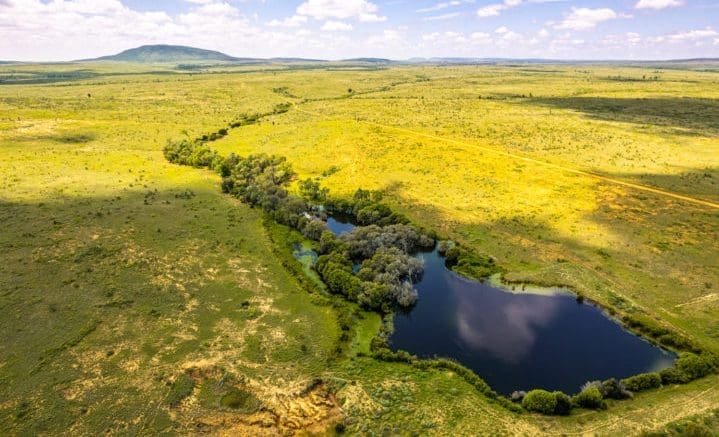
Sedgeford, 48,370ha near Alpha, shows the benefit of a big season
EARLIER this year, Queensland’s central west was identified as a rural property hotpot. While demand has been strong, few grazing properties were listed earlier in the region in 2022. Last month, however, five large-scale holdings rushed onto the market in a matter of weeks.
This week’s property review examines the value behind the move to Queensland’s central west.
Earlier this year, LAWD valuer Tim McKinnon identified Queensland’s central west as one of the strongest performing rural property markets in the country.
“There has been a sharp uplift in land values over the past 12 to 18 months, driven by transactions including the record-breaking sale of The Patrick,” he said.
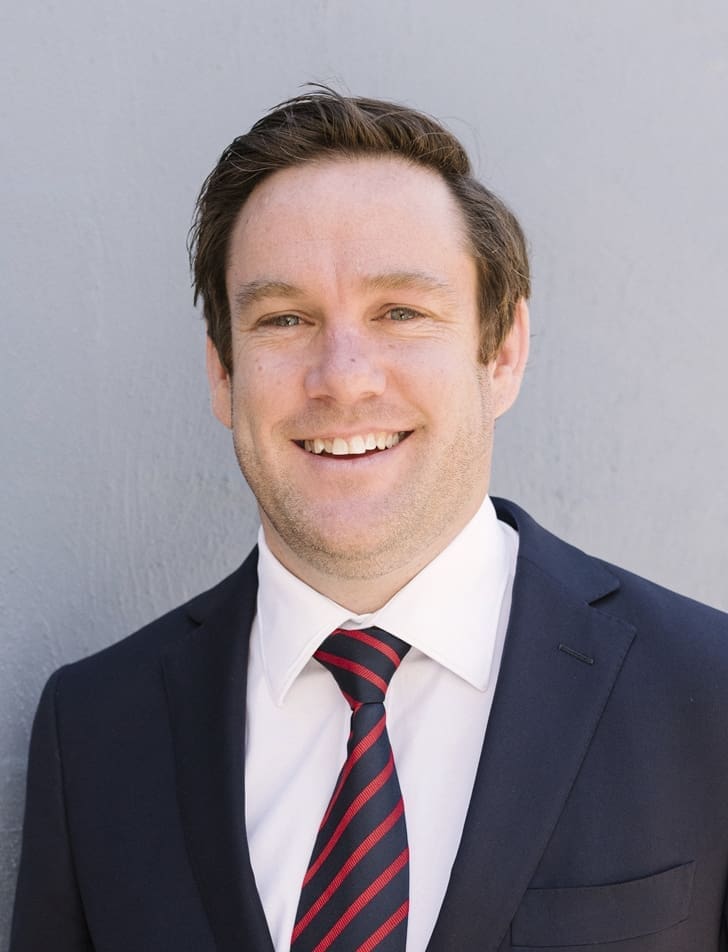
Tim McKinnon LAWD
Settled in December last year, the 16,547ha Barcaldine district holding (comprising 14,155ha of freehold and 2392ha of leasehold), sold for $1057 per hectare.
Mr McKinnon said this placed the transaction at $69/ha ahead of the previous regional record of $988/ha paid for the Boorara Aggregation in January 2021.
Later, the 18,777ha Blackall property comprising Boorara and Castleroi sold for a district record of $993/ha.
Mr McKinnon said many buyers had shifted their geographic area of consideration due to unprecedented demand and escalated budgets for quality grazing land.
“What we have seen is a rapid increase in values in areas further inland having a knock-on effect in pushing both the family-owned enterprises and corporates, which have been unsuccessful in securing land further east near places like Emerald and Roma, to the west.”
More consistent rainfall after 10 to 15 years of very dry weather had been an additional influencing factor driving values in the central west, Mr McKinnon said.
Andrew Kibble, who sold The Patrick to improve his neighbouring aggregation Barcaldine Downs, said he found the Barcaldine area excellent given its vicinity to livestock selling centres such as Roma and Dalby, where stock can be transported without the requirement for spelling.
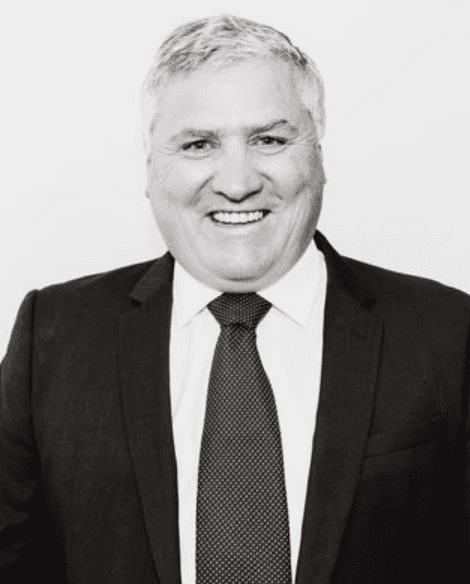
Simon Cudmore
At the time, LAWD director Simon Cudmore, who sold The Patrick to Mr Kibble, foresaw ongoing demand for land throughout the central west in 2022.
“Holdings that have benefited from an average or better wet season will continue to be in demand with the continuation of a positive commodity outlook and low interest rates maintaining a high level of producer confidence,” he said.
This week, Mr Cudmore told Beef Central he was not as bullish about where the property market was going to land.
“There is still good demand for quality properties, but there is not the frantic buying behaviour that was experienced earlier.”
“Some marketing campaigns that are currently being run are lacklustre given that interest rates are creeping up and there has been a considerable slowing of the property market,” Mr Cudmore said.
Tom Brodie, Brodie Agencies
Winton-based Tom Brodie from Brodie Agencies believes some local vendors are thinking about the opportunity to scale-back or retire due to strong property prices.
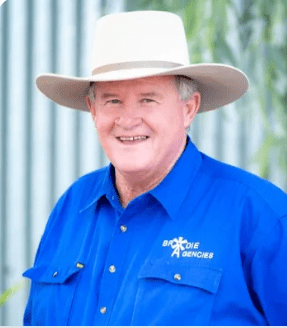
Tom Brodie
“There is solid demand for country in Queensland’s central west because it represents good value for money,” he said. “The property market is certainly more expensive to the north, to the east and the south.”
Mr Brodie said the only region that is cheaper was to the west, closer to the NT border.
“Not everyone wants to live in western Queensland because it is further away from major cities. Buyers need to also consider that droughts will occur more often and for longer periods the further west you travel.”
In 2019 Mr Brodie sold a record 16 properties. During that time, most producers who were experiencing drought found grass and value in the central west.
He said the region was considered ‘good buying’ compared to other areas of Queensland.
Only two of those properties sold to locals, with six selling to buyers from the south-east, four from central Queensland, three to New South Wales producers and one to a South Australia family.
“Of those 14 buyers, only one has sold and moved on. At least four have expanded and purchased neighbouring properties, while the others are keen to buy again,” Mr Brodie said.
Ten years ago, downs country in Queensland’s central west was mostly taken up by large northern breeding operators to fatten or background cattle south of the tick line.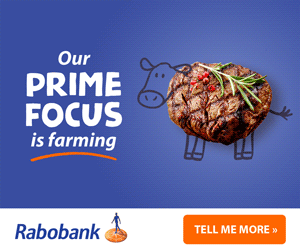
The region is also attractive because it is easily accessible, close to key markets and has good road access to southern feedlots.
However, Mr Brodie noted there has been a shift in recent years.
“In the last three to four years, demand has been driven by buyers from Queensland areas further east (Clermont, Emerald and Rolleston), from the south (Roma and Surat) and from western New South Wales.”
He said cattle producers who have secured country in the central-west have commented about how well livestock do during the winter months.
“Buyers from Taroom, Roma, St George and further south are used to their cattle and sheep not doing so well during frosty winters. The central west region is warmer and rarely experiences frosts. In addition, livestock usually don’t need licks, and the country is clean and parasite free.”
Andrew Turner, Ray White Rural Blackall
Andrew Turner from Ray White Rural Blackall believes it is an opportune time for properties in the central west to be marketed.
“The region has experienced the most favourable seasonal conditions in the last ten years. The country is presenting in a healthy state and is well on the way to recovering after drought, with good stands of grass.”
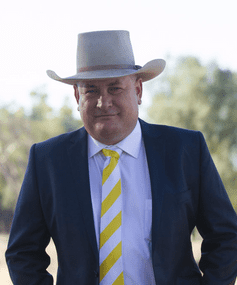
Andrew Turner
Mr Turner said despite economic uncertainties, the outlook for beef was robust and positive.
“Rising interest rates impacted the property market in July and August, however budgets have been adjusted and producers are still achieving historically high prices for livestock.”
He said equity levels were extremely healthy, prompting many big family operators and corporates to expand.
“Inquiry is mainly coming from locals seeking expansion and from producers in higher carrying capacity country (such as the Central Highlands) chasing accessible and more affordable breeding country.”
Mr Turner said central west country once deemed marginal is now considered safe.
“There is better management, supplement programs have been introduced and water infrastructure has been improved, including more readily available bore water, making the region more attractive for producers seeking large scale breeding operations.”
Here’s a rundown on recent listings across Queensland’s Central west:
For sale
- 38,951ha Fortuna Aggregation – 40km north of Aramac and 100km north of Barcaldine. Safe breeding and backgrounding country with good access to saleyards at Blackall, Emerald and Roma. Carrying capacity 1200 breeders plus progeny. It will be auctioned bare on November 11.
- 138,200ha Tonkoro Station – 245km south of Winton and 240km south-west of Longreach. Breeder or a backgrounding depot carrying 4500 breeders. Potential for Certified Organic status and a large-scale carbon project. Offered with around 4500 cattle and an extensive list of plant and equipment. Expressions of interest close on November 15.
- 73,048ha Melrose Aggregation – 90km south-east of Winton and 140km north-west of Longreach. Large-scale breeding and backgrounding operation. Offered with around 2500 cattle and an extensive list of plant and equipment. Expressions of interest close on November 15.
- The neighbouring 77,747ha Baratria Aggregation – 65km from Winton and 115km from Longreach. Large-scale grazing, breeding, backgrounding and fattening enterprise. Carrying capacity 7000-8000 cattle. Offered via expressions of interest closing on November 17.
- 48,370ha Sedgeford – 35km south-east of Alpha. Breeding and fattening property running 7000 mixed cattle. Water includes 30km dual frontage to the Native Companion Creek and 51 dams. Offered via expressions of interest closing on November 17.
- 31,708ha Hayfield Station – 38km west of Jundah and 100km north of Windorah. Breeding or backgrounding cattle, sheep or goats. Currently destocked. Carrying capacity 600 breeders or adult equivalents. Potential to be Certified Organic.
- 26,985ha Currareva – 18km east of Windorah and 230km west of Quilpie. Flood-out Cooper Creek country with 13.5km Cooper Creek frontage. Running more than 1000 mixed cattle. Listed for $6.4 million including two 10,000MGL irrigation licences.
Sold
- In July, the 12,870ha Talaheena, 60km north-west of Longreach, sold prior to auction for between $6.3 million ($494/ha) and $6.5 million ($506/ha) bare. The prime cattle, sheep and goat depot was lightly stocked and boasting an exceptional body of buffel, Mitchell and Flinders grasses inside a 2m high boundary exclusion fence. Carrying capacity 1525AE.

There’s good cometary above: however … Old Italian saying, “If you ask the water-seller if the water is fresh; what do you think he will say?”
Real-Estate Agents act for the Vendor: NOT the prospective purchaser/investor/speculator. It’s their job to frame the market, and say ‘the job is rising, don’t miss out’.
Markets rise and fall in a cyclical fashion, and some of the above-mentioned properties are being sold at the ‘top’ of even likely expectations … IMO.
A few of those listed have been on the market for some years now.
Now in the current economic environment, that interest-rates are rising fast off their extremely artificially contrived ‘lows’ around zero (and do expected that rising-trend to continue for a while yet), and with red-meat-market-prices are falling (despite changes in foreign-exchange-rates), plus there’s a late-1970’s style ‘cost-squeeze’ occurring currently in tandem with rapidly rising inflation: therefore, may I suggest, the equation for buyer impetus and risk-horizon expectations, has also changed markedly.
At the end of the day, it is only free-cash-flow and EBIT (the amount available to pay Debt, Dividends, and Taxation, and hopefully a bit left over for Cap-Ex and Maintenance, that tells the truth of an investment: and I suspect the next few years will claim quite a few scalps that did not expect the worm to turn.
The Market on any given day will follow mood. For those that are interested, this below formula tells the truth on where the stochastic-calculus drift may sit … and therefore ‘value’:
WIWO Price with All Things Necessary, and fully operational …
((SCC)(Mkt. Price @ t=0))^2, divided-by, ((Avg. # Sold)(Expected Mkt. Price @ t=1)
t=0 is ‘today’
t=1 is ‘one year hence’
The Land-Value, including ATN, less LiveStock …
Multiply the above formula by
(1 – ((E(Rev.)) / Livestock))
If you pay any more than this derived number, your business and financial risk may change from additive to multiplicative; and heading towards bankruptcy.
That’s the truth of it … IMO
This is NOT financial-advice: merely general comment. The usual caveats and disclaimers exist here … Do speak to your own advisors for any clarification.